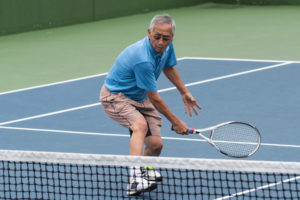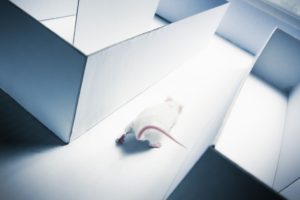Gazing out my window at blue sky over white fields, I feel the spaciousness of a new year’s beginnings. The world swept clean in the fresh morning light – and filed with possibility. The clutter of the old year, for the moment, ceases to hold me in its grip.
Perspective. What happens to our being when we awaken to a sense of ourselves in the larger landscape? As I begin the new year reflecting on the question both personally and in my work, I am reminded of scientific research that provides more pedantic but no less interesting insights on the subject.
Of Humans
What can we do to improve our health and longevity? A 25 year study in Denmark called the Copenhagen City Heart Study asked that question concerning the impact of different exercise activities on life expectancy. The stu dy followed nearly 8,600 participants who engaged in a variety of sports, including jogging, swimming, cycling, calisthenics, tennis, badminton, and health club activities. The top 2 sports for longevity? Tennis, which added 9.7 years as compared to those with a sedentary life style, and badminton which added 6.2 years.
dy followed nearly 8,600 participants who engaged in a variety of sports, including jogging, swimming, cycling, calisthenics, tennis, badminton, and health club activities. The top 2 sports for longevity? Tennis, which added 9.7 years as compared to those with a sedentary life style, and badminton which added 6.2 years.
Why tennis? The study did not evaluate the reasons different sports had more or less impact on longevity. It’s interesting to consider that tennis requires not only aerobic engagement but also the perceptual and cognitive activity of paying attention to position and motion in space – one’s own and that of the opponent as well as of the ball traversing between the two. The details continually unfold in relationship to the larger spatial framework; the ability to navigate constantly changing events depends upon awareness of the environment and our relative place within it. A tennis player cannot just keep up aerobically while “spacing out” the environment.
And Rats
Numerous studies of rodents on running wheels have revealed the impact of aerobic exercise on the brain, which includes the creation of new brain cells. The problem with looking to rodent research to better understand the impact in humans of movement activities that require awareness and decision-making, including what may underlie the increased longevity with racquet sports, is that you can’t teach a rat to play tennis.
I was excited this fall to come across a body of research that looks at what  happens in the brains of rats involved in activities requiring balance and coordination as they navigated their way through obstacles in the environment (kind of like Parkour) as compared to rats involved in repetitive aerobic exercise. Both groups had an increase in the formation of new blood vessels in the cerebellum, but only the group that had to pay attention and figure out how to navigate through the changing environment generated new brain synapses.
happens in the brains of rats involved in activities requiring balance and coordination as they navigated their way through obstacles in the environment (kind of like Parkour) as compared to rats involved in repetitive aerobic exercise. Both groups had an increase in the formation of new blood vessels in the cerebellum, but only the group that had to pay attention and figure out how to navigate through the changing environment generated new brain synapses.
Granted, it isn’t tennis (or aikido or tai chi or dance), but it does provide some parallel to human activity that involves paying attention to and making choices based upon position and motion in space. As with tennis, the rat’s task in the study involved physical engagement in the environment that implicitly included awareness, choice, adaptation and learning.
Putting it in perspective
Advice gleaned from the research doesn’t mean you need to take up tennis or parkour in the new year. Rather, the lessons lie in a deeper look at the underlying elements of these sports: motion and spatial perception; awareness and decision-making as part and parcel of physical action; whole body coordination; coordinating one’s movement in relationship to external events while navigating through the environment; adaptation and learning. Activities that awaken a sense of oneself in the larger landscape.
For me, the details of these and other scientific studies unfold in relationship to a larger landscape of inquiry – how and why mindful movement practices impact health and well being. It’s an inquiry that reveals the integrated nature of life, bringing to light the ways in which the many divergent details of our make up thread together in the whole cloth of our experience.
The landscape image is more than metaphor. The dynamic mapping of where we are in motion in space, which involves multiple senses and underlies postural control, balance, spatial perception and navigation, may be a fundamental way the nervous system creates frames of reference to help organize and coordinate all that we do. Everything ties into these dynamic maps – from the ability to stand on two feet to move in the world to cardiovascular control and digestion to attention, memory, and emotion.
Activities that awaken a sense oneself in the larger landscape can have a profound impact on one’s well being. There are lots to choose from – tai chi, dance, yoga, Feldenkrais, pickle ball, ice skating, gymnastics, bike riding, hiking, skiing, a mindful walk in the park – to name a few. And of course, Ki-Aikido – the martial art at the heart of my 40 year exploration of the how and why of mind body practices and the foundation of Minding Your Balance training.
Looking out on the landscape of the new year I am reminded to lift my head and feel the space, to keep perspective both figuratively and literally as I step out into the possibilities of the year to come.


2 comments